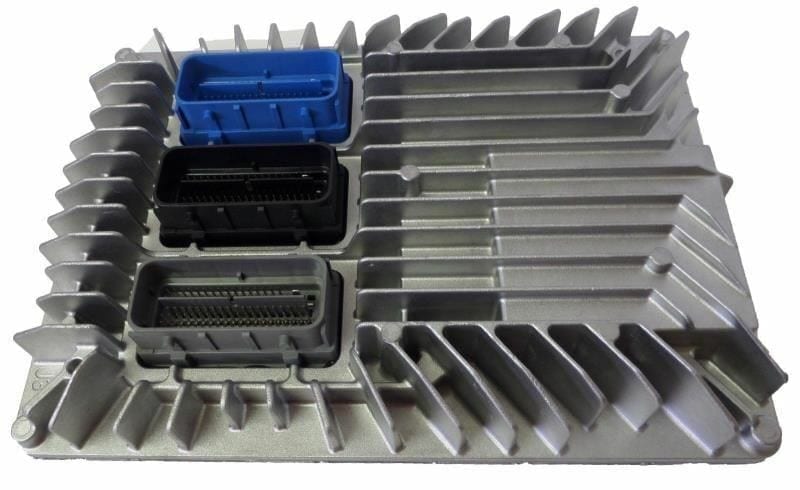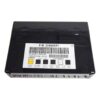Restore Peak Performance to Your GM Vehicle
Is your Buick, Chevrolet, or Cadillac suffering from frustrating issues like intermittent stalling, a persistent Check Engine Light, or a sudden drop in fuel economy? These are classic signs of a failing Engine Control Module (ECM), the central computer that manages your engine’s performance. As a technician with over two decades of experience under the hood, I’ve seen firsthand how a faulty ECM can turn a reliable vehicle into a constant headache. This isn’t just an inconvenience; it can affect your vehicle’s safety and reliability. This replacement 2010 Allure Engine Control Module is the definitive solution to get your vehicle running smoothly and efficiently again.
The biggest hurdle in replacing an ECM has always been the expensive and time-consuming programming required at a dealership. We eliminate that step entirely. Before this module ships, we flash it with the latest official GM software, specifically matched to your vehicle using the VIN you provide. This means it arrives at your door ready for a straightforward installation, saving you hundreds of dollars and significant downtime. It’s a professional-grade fix designed for both seasoned mechanics and first-time DIYers.
A Technician’s Notebook: The Phantom Stall
I once had a 2012 Chevy Impala in my bay that was driving the owner crazy. It would run perfectly for days, then suddenly stall at a stoplight with no warning and no immediate Check Engine Light. The customer had already replaced the fuel pump and cleaned the throttle body. After running a full diagnostic sweep, I found a stored history code, P0606 (ECM Processor Fault), that only appeared intermittently. These ‘phantom’ issues are often caused by internal circuit board failures in the ECM, which can be triggered by heat and vibration. Swapping in a properly programmed ECM, like this one, resolved the issue instantly. It’s a reminder that the ECM is the brain, and when it has a problem, the symptoms can be unpredictable.
Common Signs of a Failing ECM
If you’re experiencing any of the following, a failing engine computer could be the culprit. A failing module can trigger a variety of Diagnostic Trouble Codes (DTCs), with P0601 (Internal Control Module Memory Check Sum Error) and U0100 (Lost Communication With ECM/PCM) being common indicators.
- ✔ Engine stalling or misfiring unpredictably.
- ✔ Failure to start, even with a good battery and starter.
- ✔ Noticeable decrease in fuel efficiency.
- ✔ Check Engine Light is on and won’t clear.
- ✔ Poor or erratic automatic transmission shifting.
- ✔ Failure to pass state emissions testing.
A Straightforward Guide to Installation
Replacing your 2010 Allure Engine Control Module is a manageable job that you can do at home. The exact location can vary, but it’s typically found in the engine bay on the driver’s side or attached to the air cleaner assembly. Always consult a service manual for your specific vehicle if you’re unsure.
- Safety First: Always disconnect the negative terminal from your vehicle’s battery and wait a few minutes before beginning work.
- Locate the Old Module: Find the existing ECM in your engine compartment. It will be a metal box with several large electrical connectors.
- Disconnect the Harnesses: Carefully release the locking tabs on the electrical connectors and pull them straight out from the module. Avoid pulling on the wires themselves.
- Remove the Module: Unbolt the old ECM from its mounting bracket. There are typically 2-4 bolts holding it in place.
- Install the New Module: Bolt your new, pre-programmed ECM into place. Reconnect the electrical harnesses, ensuring they click securely into position.
- Reconnect and Test: Reconnect the negative battery terminal. The vehicle may require a security relearn procedure, which typically involves cycling the key. Start the engine and check for proper operation and ensure the Check Engine Light is off.
Verified Vehicle Compatibility
This module is a direct replacement for part numbers 12616889, 12630908, 12637106, 12642665, 12650256, and 12651993. It is guaranteed to fit the following vehicles. Please match your vehicle, year, and engine size to ensure proper fitment.
CAMARO 12 (3.6L)
CAPTIVA SPORT 12
CTS 10-12 (3.0L, 3.6L)
EQUINOX 10-11
IMPALA 12
LACROSSE 10-11 (2.4L, 3.0L)
ORLANDO 12-13
REGAL 11
SAAB 9-5 10-11 (2.0L)
SRX 10-11 (3.0L)
TERRAIN 10-11
Frequently Asked Questions
Frequently Asked Questions
Do I need to program this module?
No. We program the module to your vehicle’s specific VIN before we ship it to you. It arrives ready to install, saving you a trip to the dealership.
Where do I find my vehicle’s VIN?
Your 17-digit Vehicle Identification Number (VIN) can be found on your vehicle’s registration, insurance card, or on a metal plate on the driver’s side of the dashboard, visible through the windshield.
What if I have other modifications on my car?
This module is programmed with the latest stock GM calibration for your VIN. It is designed for vehicles with original factory equipment and settings.
Will this fix my check engine light?
If the check engine light is caused by a faulty ECM (e.g., codes P0601, P0606), this part will resolve the issue. It’s crucial to ensure your diagnosis is correct, as other failing sensors or components can also trigger the light.
Is any other work required after installation?
In some cases, a security or anti-theft system relearn procedure is required. This can typically be done without special tools and involves a sequence of key turns. Instructions are readily available online for most GM models.



